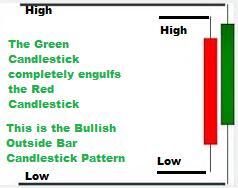Contents:


At this stage it might also become necessary to scale out the build to multiple machines for parallel processing and for specific target environments. Techniques for zero downtime deploys can be important to include in the automated process to gain better flexibility and to reduce risk and cost when releasing. At this level you might also explore techniques to automate the trailing part of more complex database changes and database migrations to completely avoid manual routines for database updates. I recently wanted to find a model that explains all this in a more technical level. To help companies to identify where you are in the area of DevOps, test, code, culture, processes and so on. I have read four different maturity models from four different companies.
Download the GitOps maturity model and evaluate where your organization is on their journey to continuous delivery. Big-Bang deploys often are hard to rollback because they touch multiple applications and databases. Imagine breaking production in your Saturday, without an easy rollback; you will have a hard time. It is also reasonably risky; no tests are running after the deployment, so the developer has to test manually.
change faster? To do more with less? To surpass your
CDMM provides a structured way for organizations to assess and improve their ability to implement continuous delivery practices, which can lead to increased efficiency, quality, and stakeholder satisfaction. By plotting where you and your team sit against each of the pillars, you can also identify any areas that need more investment to bring you up to par before you start progressing to the next stage. Finally, sharing a maturity model with business stakeholders will also help to set reasonable expectations and communicate the benefits derived from CI/CD without reaching expert levels. Once you have established the foundations, you can look towards automating the first stages of your pipeline by extending your automated tests and collaborating with operations teams on the creation of pre-production environments. At beginner level, you start to measure the process and track the metrics for a better understanding of where improvement is needed and if the expected results from improvements are obtained.

Reporting at this stage would typically include static analysis of code and quality reports which might be scheduled so that the latest reports are always accessible to facilitate decisions on quality and where improvements are needed. When moving to beginner level you will naturally start to investigate ways of gradually automating the existing manual integration testing for faster feedback and more comprehensive regression tests. For accurate testing the component should be deployed and tested in a production like environment with all necessary dependencies. At expert level some organizations choose to make a bigger effort and form complete cross functional teams that can be completely autonomous. With extremely short cycle time and a mature delivery pipeline, such organizations have the confidence to adopt a strict roll-forward only strategy to production failures.
Where we visualize and understand the path from idea to where it is released and brings business value. Every company is unique and has its own specific challenges when it comes to changing the way things work, like implementing Continuous Delivery. This maturity model will give you a starting point and a base for planning the transformation of the company towards Continuous Delivery. After evaluating your organization according to the model you need to set the goals and identify which practices will give your organization the best outcomes.
We can go to any version of the application through the click of a button. It might be time to check in on how your teams are doing and identify areas for improvement. 40% of teams practice ChatOps for conversation driven development during remediation.
Continuous Delivery and Continuous Deployment are closely related, so I’ll refer to both as CD from now on for simplicity. Most common ones are Jenkins from CloudBees, Travis CI, Go from ThoughtWorks, and Bamboo from Atlassian. IBM’s new rack mount Z16 mainframe gives edge locations the ability to process workloads locally, taking the burden off systems … TypeScript and JavaScript are two complementary technologies that are driving both front-end and back-end development. Without proper planning, an organization could end up feeling trapped in its relationship with a cloud provider.
Canary deployments can be useful when you have multiple machines. So you don’t take the application offline and minimise risks by deploying to only a subset of the traffic at a time. After we deploy the new version to staging, we can warm up the application to avoid downtime and run smoke tests to validate the application is healthy. That’s an excellent safety net, in this way you won’t be able to break the entire application because of a wrong deployment.
The Six Aspects of Continuous Delivery Maturity
If you just said “huh, what is ChatOps?” or “I think I’m doing ChatOps, maybe?” – check out a real life scenario and pro-tips. continuous delivery maturity modeling an automated delivery pipeline doesn’t have to happen overnight. Start small, by writing tests for every bit of new code, and iterate from there. Dev and ops teams use a common set of tools but share information manually.
How a Mature DevOps Practice Can Strengthen Competitive Advantage – DevOps.com
How a Mature DevOps Practice Can Strengthen Competitive Advantage.
Posted: Fri, 18 Nov 2022 08:00:00 GMT [source]
In the most ideal situation you want to automatically up- and down-scale the continuous integration services based on how much you are using them. Continuous Delivery 3.0 Maturity Model is a framework for assessing an organization’s maturity in implementing continuous delivery practices, created by the Netherlands National Institute for the Software Industry . It was created in light of recent trends and best practices in software development, such as cloud native and DevOps. Moving to expert level in this category typically includes improving the real time information service to provide dynamic self-service useful information and customized dashboards.
Continuous Delivery Maturity Model
This model will typically give answers to questions like; what is a component? Automatic reporting and feedback on events is implemented and at this level it will also become natural to store historical reports connected to e.g. builds or other events. This gives management crucial information to make good decisions on how to adjust the process and optimize for e.g. flow and capacity. In this category we want to show the importance of handling this information correctly when adopting Continuous Delivery. Information must e.g. be concise, relevant and accessible at the right time to the right persons in order to obtain the full speed and flexibility possible with Continuous Delivery. Apart from information directly used to fulfill business requirements by developing and releasing features, it is also important to have access to information needed to measure the process itself and continuously improve it.

Microservices Best practices for building loosely coupled services. Tobias Palmborg, Believes that Continuous Delivery describes the vision that scrum, XP and the agile manifesto once set out to be. Continuous Delivery is not just about automating the release pipeline but how to get your whole change flow, from grain to bread ,in a state of the art shape. Former Head of Development at one of europes largest online gaming company. Tobias is currently implementing Continuous Delivery projects at several customers.
Technology drives culture
At the intermediate level you will achieve more extended team collaboration when e.g. DBA, CM and Operations are beginning to be a part of the team or at least frequently consulted by the team. Multiple processes are consolidated and all changes, bugs, new features, emergency fixes, etc, follow the same path to production.
The Codefresh platform is a complete software supply chain to build, test, deliver, and manage software with integrations so teams can pick best-of-breed tools to support that supply chain. By following these best practices, organizations can implement a CDMM that helps them to achieve higher levels of maturity and to deliver software changes quickly and reliably, with minimal risk and downtime. Patrik Boström, Tobias Palmborg, and Andreas Rehn aims to help organizations adopt specific tools, principles, methods and practices to deepen their adoption of continuous delivery, achieving fast transformation with sustainable results. It can help organizations identify initial actions that provide the most significant effect, while indicating which practices are essential, and which should be considered advanced or expert.
- This means that every commit to the workspace is automatically released to production, and thus leading to several deployments of your software during a day.Continuous Delivery is a basic pre-requisite for Continuous Deployment.
- It works as a version control and can be used to keep track of changes in any set of files.
- It is also reasonably risky; no tests are running after the deployment, so the developer has to test manually.
- Advanced practices include fully automatic acceptance tests and maybe also generating structured acceptance criteria directly from requirements with e.g. specification by example and domains specific languages.
For example, a programmer can describe Level 1 “Initiate” in terms of “Write a program that prints Hello World”, up to Level 5 “Orchestrate” in terms of “Run a worldwide distributed system in concert with our key partners”. It might sound rude but I’m a creative person that love to be on the top of the wave. Processes can’t make me think outside of the box or live outside it so I just creates them for others that don’t have time or interest to be on the top of the wave all the time. My daily activity in my head loves the ideas of innovation, efficiency – how can we make it easier and still with high quality? How can we do it in such a way that we do not need to do a lot of bad work when we want to change something? These are the questions I always ask myself every day in all areas.
All https://forexhero.info/es are communicated clearly to all people involved, and documentation and release notes are created automatically. Achieve continuous integration and continuous delivery into reality. Before we continue, we need a shared understanding of infrastructure as code.
Once transitioning from manual deploys, I guarantee you there are steps in the deployment process, only the person deploying knows. Once we deploy those features at once, many changes happen simultaneously, increasing risk exponentially, and once things go wrong, which feature caused the problem? Sometimes isn’t even a single feature issue, but a combination of multiple changes that were not tested together. The tools and technology your teams use can drive better automation and collaboration between teams. We see DevOps as a lifecycle with each phase flowing into the other to break down silos and inform key stakeholders along the way.
Boström, Palmborg and Rehn Continuous Delivery Maturity Model
This is fine memeIn 2015, we were automating a web API deployment, with a vast customer base, so we waited until dawn to start the first automated deploy. Let’s say every week the development team can develop a single feature. Amplify feedback using tools that provide cross-team visibility. The first step in moving to DevOps is to pull from agile principles – people first, then process and tools. Dev and ops teams use a common set of tools but don’t have visibility into each others’ work. The maturity score for the different categories indicates that organizations that use DevOps always are more mature to achieve goals than organization that use it rarely.
Are you ready to automate continuous deployment in CI/CD? – InfoWorld
Are you ready to automate continuous deployment in CI/CD?.
Posted: Mon, 20 Jun 2022 07:00:00 GMT [source]
So they would take a canary with them, leave the bird in the cave for a while, if the bird is still all right, it would be safe for them. We are using a similar approach by deploying to a subset first. Before going to the next batch of machines to deploys, we can also run smoke tests before the next stage. 19% of respondents in your category said they deploy code to production weekly. In looking at thethree ways of DevOps- flow, amplify feedback, and continuous learning and experimentation – each phase flows into the other to break down silos and inform key stakeholders.
Government Functional Standard – GovS 005: Digital (HTML) – GOV.UK
Government Functional Standard – GovS 005: Digital (HTML).
Posted: Mon, 20 Mar 2023 07:00:00 GMT [source]
AI aids automatic backlog creation and backlog prioritization. Continuous Planning is heavily supported by Continuous Intelligence. Technology that makes it simple to roll back and forth between database versions. Optimised for rapid feedback and visualisation of integration problems. Software Deployment Fix deployment problems using modern strategies and best practices. Continuous Delivery Understand delivery, deployment, pipelines, and GitOps.
It can also be difficult to figure out how the team is progressing on this journey. Maturity Models allow a team or organization to assess its methods and process against a clearly defined benchmark. Continuous Deployment is often confused with Continuous Delivery. However it is the logical conclusion of Continuous Delivery where the release to production is completely automated.







